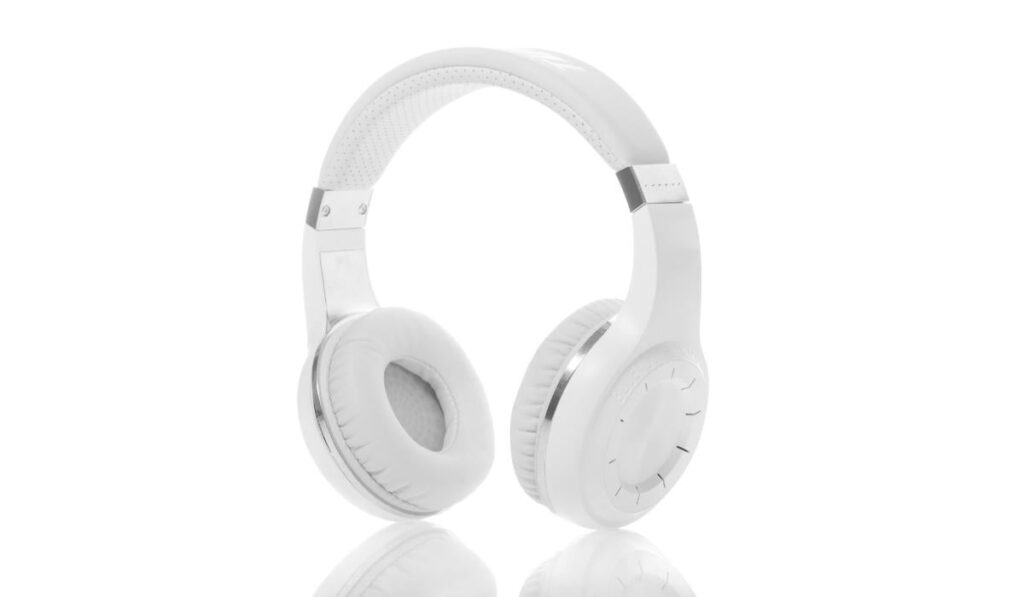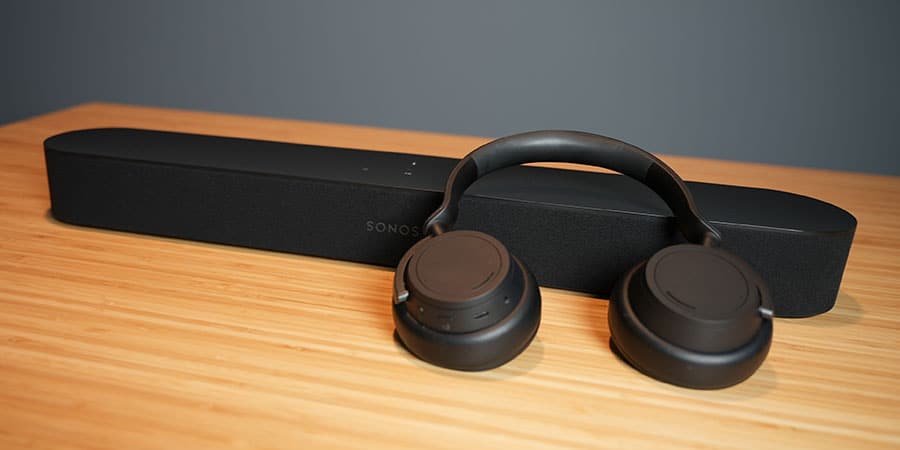You get great audio from your soundbar but sometimes you don’t want everyone listening to what you've got on the TV. Whether it’s late at night or during the day, there are times when you don’t want to disturb others. Turning the volume down and relying on closed captions is an option, though not the best one. So, what about pairing your headphones with your soundbar? Is it even possible to pair headphones to a soundbar?
You can’t pair headphones with your soundbar because the soundbar is designed to receive audio rather than send it. Some TVs may allow you to connect both headphones and a soundbar to it, but it's unlikely that the TV will be able to output to 2 audio devices at a single time.
Even though you can’t plug your headphones or pair them with your soundbar, there are ways you can still connect them to your TV, in fact, there are many ways you can connect a soundbar to other devices (our guide). You can even use Bluetooth headphones and soundbars simultaneously.
The Purpose of Soundbars
Soundbars are a great addition to almost any entertainment system because they can dramatically improve sound quality. Even though you can’t get a true surround sound experience, some soundbars manage to come close. The long, thin, audio device holds multiple speakers. The number varies, but you want a soundbar with at least five.
It helps ensure there aren’t any audio dead spots in the room. You have your choice of either a wired or wireless soundbar, but both components have one thing in common. If you've read our guide on how they work, you'd know that soundbars are primarily designed to receive not transmit audio signals.
Even Higher- Priced Soundbars Can’t Transmit Audio
While you might think a better model has the capability to send audio, it doesn't. However, you do get better audio quality with a higher-priced soundbar like the Sonos Arc (on Amazon). Movies and music will sound like you’re at a movie theater or concert, but the downside is the soundbar still doesn’t have the hardware or software needed to transmit audio to your headphones.
Some soundbars do transmit audio wirelessly, but that doesn't mean it has the capability to send the audio to a pair of Bluetooth headphones. The Nakamichi Shockwave (on Amazon) transmits audio to its satellite speakers. Even though the audio signal is transmitted wirelessly, it can’t be connected to a pair of headphones.
How to Get Sound from Your TV to Wireless Headphones

You have several options on how you get audio from your TV to your wireless headphones. You do need Bluetooth connectivity, but not everyone’s TV comes with the function. Another option is to look at the devices you have connected to your TV and use their Bluetooth function if they have it.
Gaming Headset
A wireless gaming headset that doesn’t use a USB adapter will pair with most TVs, though it depends on the brand. Keep in mind that not all gaming consoles come with Bluetooth functionality. If it does, you can find it in the settings menu. If yours comes with this useful feature, follow the instructions to pair the devices.
Streaming Devices
Whether they know it or not, anyone with an Amazon Firestick or smart TV with a Fire TV platform has a built-in Bluetooth feature. You can pair your wireless headphones with the streaming media device and listen to audio from your TV. In the Fire TV settings, you’ll find the option to add another device.
Roku TVs and streaming media devices don’t have a Bluetooth function, but there is a Private Listening feature. When you turn the feature on and download the Roku app to your smartphone, audio is transmitted to your handheld device.
You can either plug your headphones into the phone’s audio jack or if the device is Bluetooth enabled, pair it with your headset.
👉 Related Reading: How to Connect Bluetooth Headphones to a Roku TV?
Android TV
Fire and Android TVs have a few features in common. One is Bluetooth connectivity. You can easily pair any Bluetooth enabled device with the TV, including your headset.
The steps to pair the two devices are similar to a Fire TVs. In the menu settings, you find the option to add another device. The on-screen instructions will walk you through the simple steps.
Bluetooth Transmitter
Not everyone has a Bluetooth-enabled TV or other media device. Don’t worry, you can still connect your wireless headphones and get audio from your TV.
A Bluetooth streamer is a compact and inexpensive device that plugs into your TV. It sets up the device so it streams the audio to your headset.
👉 Related Reading: 17 Best Bluetooth Headphone Adapters 2024
Using Bluetooth Headsets and Soundbars Simultaneously

Some smart TVs will let you use wired headphones and a soundbar at the same time but not wireless ones. You can only have one Bluetooth enabled device connected to another. When your headphones are paired with the TV your soundbar won't be connected. There is a way to connect both devices, though not together.
For instance, you can pair your headphones and soundbar to the TV separately. Your TV will instantly recognize each device so you only need to go through the pairing steps once. Additionally, you will need to go into the TV’s settings menu and select the device every time you want to use it.
Pairing Headphones to a Soundbar
You can’t pair your headphones to a soundbar, though it would make everything easier. Also, you can’t connect a soundbar and wireless headset to your television simultaneously either, but there are some alternatives to fall back on. For example, as it was already mentioned above, you can use another Bluetooth enabled device like a gaming headset.
Your gaming console might come with Bluetooth functionality, in fact, several models include the convenient feature for gamers. Some media streaming devices are also Bluetooth enabled, giving you another way to get audio to your headphones. The quick and dirty way of getting this done is to purchase an inexpensive Bluetooth streaming device.
To do this, just plug it into the back of the TV, and all of your devices are wirelessly connected. No matter which option you use, you’ll have to switch between the devices in the TV’s settings menu and select the one you want to use. It’s a minor inconvenience but ultimately worth it to get audio on your headphones.





